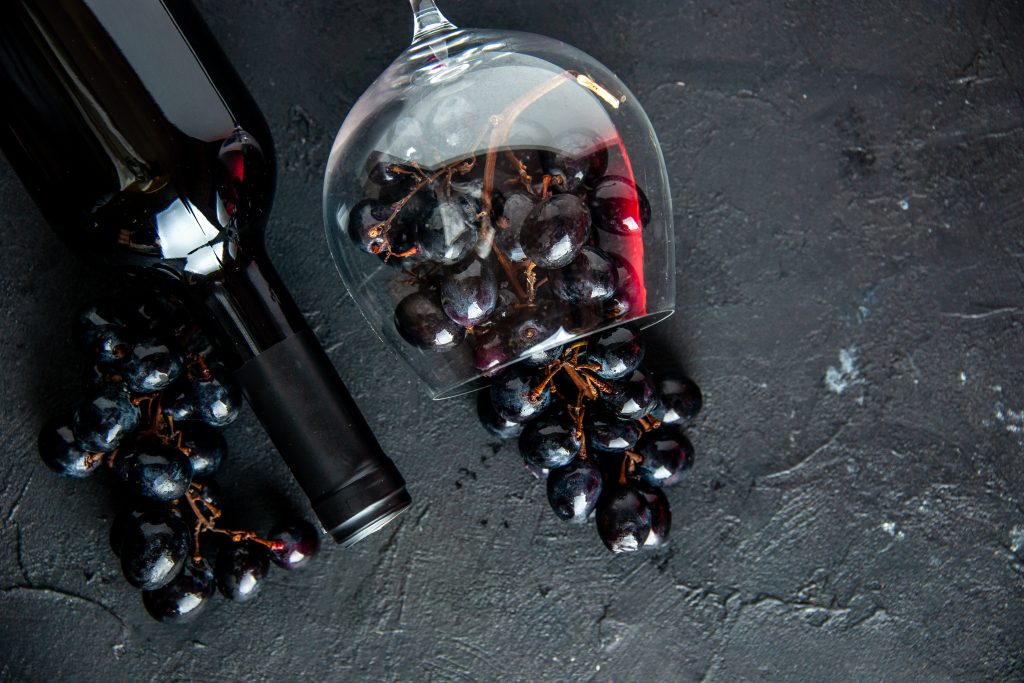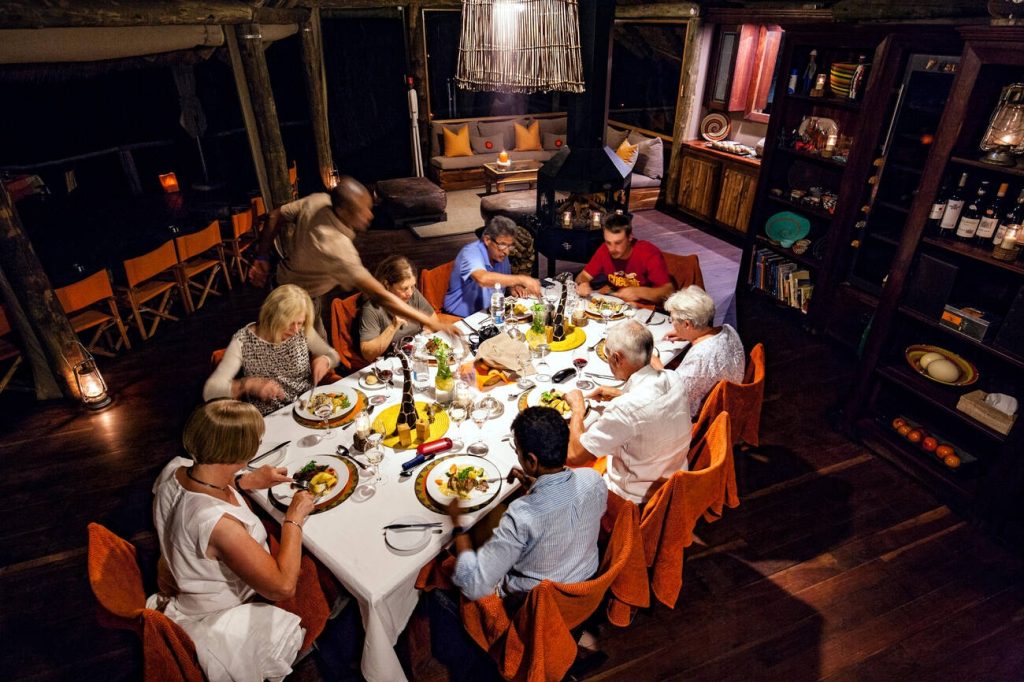Are you ready to dive deep into the world of Spanish wine grapes? Well, get ready to explore the lush vineyards of Northwest Green Spain and the sun-drenched Southern Mediterranean, among many other regions. From Rías Baixas’ zesty white wines made with the Albariño grape to the elegant reds of Bierzo crafted from the Mencía grape, there’s so much to discover. Don’t forget the renowned Tempranillo wines from the Ebro and Duero River Valleys, as well as the sparkling Cava from the Northern Mediterranean Coast. Whether you’re a fan of crisp whites, unique indigenous varieties, or full-bodied reds, this deep dive will expand your knowledge and appreciation for the diverse flavors and traditions that make Spanish wines so special. So grab a glass and let’s embark on this flavorful journey through the vineyards of Spain.
Contents
- Spanish Wine Regions and Diversity
- Northwest Green Spain and Key Grapes
- Ebro and Duero River Valleys and Key Grapes
- Northern Mediterranean Coast and Key Grapes
- Southern Mediterranean and Key Grapes
- Sparkling Wines: Reserva Cava and Qualities
- Crisp Whites: Verdejo and Albariño
- Unique Whites: Godello and Txakoli
- Value Reds: Bobal, Garnacha, and Mencía
- Full-Bodied Reds: Priorat/Montsant, Monastrell, and Reserva Rioja
- Red Grape Varieties: Tempranillo, Garnacha, Cariñeña, Bobal, Monastrell, and More
- White Grape Varieties: Albariño, Verdejo, Godello, Viura, Xarel-Lo, and More
Spanish Wine Regions and Diversity
Exploring Spanish wine regions and their diversity is an enlightening journey into the world of wine. From the northwest Green Spain with its unique climate to the Ebro and Duero River Valleys known for Rioja, and the northern Mediterranean coast famous for Cava, to the southern Mediterranean region with its focus on Monastrell, each region offers a distinct experience.
In the northwest Green Spain, encompassing regions like Rías Baixas and Bierzo, the cool climate and abundant rainfall create the perfect conditions for growing grapes like Albariño and Mencía. These regions are known for their mineral-driven, zesty white wines and tart, elegant reds.
Moving eastward, the Ebro and Duero River Valleys are home to renowned regions like Rioja and Ribera del Duero. These regions produce noteworthy Tempranillo wines, with Rioja being particularly famous for its long-standing bodegas and age-worthy reds. Rueda, situated in this area, is also well-known for its exceptional white wines made from the Verdejo grape.
Heading to the northern Mediterranean coast, the focus shifts to Cava, Spain’s answer to Champagne. This region, along with Priorat and Montsant, offers a perfect Mediterranean climate for producing sparkling wines. Cava, made primarily from indigenous grapes like Macabeo, Parallada, and Xarello, closely mimics the aging requirements of Champagne, making it a worthy choice for special celebrations.
Lastly, the southern Mediterranean region, including Utiel-Requena and Jumilla, showcases the versatility of the Monastrell grape. This region offers fruit-forward wine options with powerful reds and notable grape varieties like Bobal and Cabernet Sauvignon.
Northwest Green Spain and Key Grapes
In the northwest Green Spain, you’ll discover a unique wine region known for its distinctive climate and key grape varieties. Galicia, a region within Northwest Spain, boasts a unique wine identity that sets it apart from the rest of the country. Within Galicia, there are several sub-regions that showcase the diversity of the area. Rías Baixas, for example, is famous for its mineral-driven white wines made with the Albariño grape. These wines exhibit a crisp acidity and flavors of citrus and stone fruits. Moving on to Bierzo, you’ll find tart and aromatic red wines made primarily with the Mencía grape. These wines offer elegant flavors of sour cherry, pomegranate, and blackberry, with a touch of licorice. Finally, in Ribeira Sacra, you’ll discover the elegance of Mencía wines. This sub-region produces wines with a fine balance of fruit and acidity, showcasing flavors of red berries, violets, and herbs. Northwest Green Spain truly showcases the unique character of Albariño and Mencía grapes, offering wine enthusiasts a taste of Galicia’s exceptional wine identity.
Ebro and Duero River Valleys and Key Grapes
As you delve further into the diverse wine regions of Spain, continue your exploration from the northwest Green Spain and discover the captivating Ebro and Duero River Valleys, known for their exceptional wines and key grape varieties. Here are five things you should know about this intriguing wine region:
- Tempranillo and Ribera del Duero: The Ebro and Duero River Valleys are renowned for producing noteworthy Tempranillo wines. One of the standout regions is Ribera del Duero, which is known for its bold and structured red wines made primarily from Tempranillo grapes.
- Rioja: Rioja, located in the Ebro River Valley, is one of Spain’s most famous wine regions. It is renowned for its long-standing bodegas and age-worthy red wines. Tempranillo is the dominant grape variety here, producing elegant and complex wines with flavors of black cherry, roasted tomato, black pepper, and vanilla.
- Rueda: Rueda is a white wine hotspot in the Ebro River Valley. It is famous for its exceptional, minerally white wine grape called Verdejo. Rueda Verdejo wines are known for their crisp apple, lime zest, and pineapple flavors, making them perfect for refreshing summer sipping.
- Toro: Another noteworthy region in the Ebro River Valley is Toro, which is gaining recognition for its powerful and robust red wines made from the local Tinta de Toro grape. These wines display intense flavors of blackberry, plum sauce, black pepper, and cocoa powder.
- Diversity: The Ebro and Duero River Valleys offer a diverse range of wines beyond Tempranillo. From the elegant reds of Rioja to the mineral-driven whites of Rueda, there is something for every wine lover to explore in this captivating region.
The Ebro and Duero River Valleys are a treasure trove of exceptional wines and key grape varieties. Whether you’re a red wine enthusiast or a white wine lover, these regions have something to offer. From the bold and structured Tempranillo wines of Ribera del Duero to the crisp and refreshing Verdejo wines of Rueda, the wines of the Ebro and Duero River Valleys are sure to captivate your palate.
Northern Mediterranean Coast and Key Grapes
Now let’s delve into the captivating wines and key grape varieties of the Northern Mediterranean Coast. This region is home to some of Spain’s most renowned wines, including Cava and Priorat. The Northern Mediterranean Coast enjoys a perfect Mediterranean climate, ideal for grape cultivation.
When it comes to sparkling wines, Cava takes the spotlight along the coastline. Made with indigenous grapes such as Macabeu, Parellada, and Xarello, Cava offers a dry profile with notes of lime, white flowers, white peach, and minerals. Reserva Cava, distinguished by a green sticker seal on the bottle, closely mimics the aging requirements of Champagne, making it a worthy choice for special celebrations.
Moving on to crisp whites, two key grapes stand out: Verdejo and Albariño. Verdejo, mainly grown in Rueda, delights with flavors of Meyer lemon, lemon/lime, and white peach. It is perfect for outdoor settings, adding a refreshing touch to fire escapes, balconies, or parks. Albariño, grown close to the Atlantic Ocean in Rías Baixas, produces complex and elegant white wines with crisp apple, lime zest, and pineapple flavors.
For those seeking unique whites, Godello and Txakoli are the stars. Godello, primarily grown in Valdeorras, offers Chardonnay-like characteristics with dusty apple and wood spice notes. It can be enjoyed either oak-aged for rich, creamy flavors or tank-made for fresh citrus flavors. Txakoli, on the other hand, entices with crisp green apple, lime peel, and saline flavors. It is the ideal palate cleanser and is best enjoyed straight from the bottle.
When it comes to value reds, the Northern Mediterranean Coast showcases the key grapes of Bobal, Garnacha, and Mencía. Bobal, predominantly found in Valencia, offers juicy blueberry and blackberry flavors with soft tannins, providing excellent value at an affordable price point. Garnacha, the second most important red wine grape in Spain after Tempranillo, delights with wild strawberry, raspberry, allspice, and ruby red grapefruit flavors. Mencía, best when grown in steep rocky hillsides, shows great potential with its sour cherry, pomegranate, blackberry, and licorice flavors.
Southern Mediterranean and Key Grapes
Explore the vibrant wines and key grape varieties of the Southern Mediterranean region. The Southern Mediterranean is home to a diverse range of wine regions, each with its own unique characteristics and grape varieties. Here are some of the standout regions and key grapes to know:
- Utiel-Requena and Monastrell: Located in the province of Valencia, Utiel-Requena is known for its robust red wines made from the Monastrell grape. These wines are rich and full-bodied, with flavors of black fruit and spices.
- Yecla and Bobal: In the region of Murcia, Yecla stands out for its wines made from the Bobal grape. This indigenous variety produces deep-colored red wines with intense fruit flavors and a touch of earthiness.
- Jumilla and Monastrell: Another region in Murcia, Jumilla is renowned for its Monastrell wines as well. These wines are bold and powerful, with ripe berry flavors and a velvety texture.
- Bullas and Bobal: Bullas, also located in Murcia, is another region where Bobal thrives. The wines produced here are known for their vibrant fruitiness and smooth tannins.
- Cabernet Sauvignon in Southern Mediterranean: While indigenous grape varieties dominate the Southern Mediterranean, international varieties like Cabernet Sauvignon also find success in this region. These wines offer a different expression, with black currant and cedar flavors complemented by the region’s unique terroir.
In the Southern Mediterranean, you can expect fruit-forward wines with a Mediterranean flair. Whether you’re exploring the deep, complex flavors of Monastrell or the vibrant freshness of Bobal, the wines of this region are sure to captivate your senses.
Sparkling Wines: Reserva Cava and Qualities
Looking for a high-quality sparkling wine from Spain? Look no further than Reserva Cava. Made using Spain’s indigenous grapes – Macabeo, Parallada, and Xarello – Reserva Cava offers a dry profile with notes of lime, white flowers, white peach, and minerals. Reserva Cava closely mimics the aging requirements of Champagne and is identified by a green sticker seal on the bottle, indicating its superior quality.
The production process of Reserva Cava involves a minimum aging period of 18 months on the lees, resulting in a wine with a fine and persistent bubble. This aging potential gives Reserva Cava a complex and well-integrated flavor profile that is perfect for special celebrations.
When it comes to food pairings, Reserva Cava’s crisp acidity and delicate bubbles make it a versatile choice. It pairs well with a variety of dishes, including seafood, shellfish, poultry, and even desserts like fruit tarts.
While Reserva Cava may draw comparisons to Champagne, it has its own unique characteristics. Reserva Cava offers excellent value for its quality and is often more affordable than Champagne. It also showcases the diversity of Spain’s sparkling wine production regions, including Penedés, Catalonia, and other regions in Northeast Spain. So, if you’re looking for a high-quality sparkling wine with aging potential that rivals Champagne, Reserva Cava is the perfect choice.
Crisp Whites: Verdejo and Albariño
You frequently encounter crisp white wines in Spain, and two notable varieties to explore are Verdejo and Albariño. These wines are known for their refreshing acidity, vibrant flavors, and versatility. Here are some key points to consider when comparing Verdejo and Albariño:
- Verdejo vs Albariño: A Comparison:
- Verdejo is primarily grown in the Rueda region, while Albariño is found in the Rías Baixas region.
- Verdejo wines often exhibit flavors of Meyer lemon, lemon/lime, and white peach, while Albariño is known for its crisp apple, lime zest, and pineapple flavors.
- Both varieties offer a zesty acidity and bright fruit characteristics, but Verdejo tends to have a fuller body, while Albariño is lighter and more delicate.
- Food Pairing with Crisp Whites:
- Verdejo pairs well with seafood, especially grilled shrimp and oysters, as well as light salads and vegetarian dishes.
- Albariño complements shellfish, such as clams and mussels, as well as fresh cheeses and Asian cuisine.
- The Rise of Verdejo and Albariño in International Markets:
- Verdejo and Albariño have gained popularity in international markets due to their refreshing profiles and food-friendly nature.
- Consumers appreciate the uniqueness and quality of these Spanish white wines, which offer a delightful alternative to more traditional options.
- Exploring the Terroir of Verdejo and Albariño:
- Verdejo thrives in the sandy soils of Rueda, benefiting from the region’s continental climate and high altitude vineyards.
- Albariño grows close to the Atlantic Ocean in Rías Baixas, where the maritime influence contributes to the wine’s complex and elegant character.
- Verdejo and Albariño: Old World vs New World Expressions:
- Old World expressions of Verdejo and Albariño showcase the grape’s characteristics in a more traditional style, with subtle oak influence and mineral notes.
- New World expressions tend to emphasize the fruit flavors, offering a more vibrant and fruit-forward profile.
Unique Whites: Godello and Txakoli
When it comes to unique white wines in Spain, two varieties that stand out are Godello and Txakoli. Godello, primarily grown in Valdeorras, produces elegant and mineral-driven white wines with flavors of pear and citrus. Txakoli, on the other hand, is known for its dry and crisp green apple, lime peel, and saline flavors. In terms of production methods, Godello can be made in two styles: oak-aged for rich, creamy flavors or tank-made for fresh citrus flavors. Txakoli, on the other hand, is best enjoyed straight from the bottle, making it an ideal palate cleanser.
When it comes to food pairings, Godello pairs well with seafood, particularly shellfish, due to its mineral-driven character. It also complements dishes with creamy sauces or roasted poultry. Txakoli, on the other hand, is a great match for fresh seafood, especially oysters, as well as light, tangy dishes like ceviche and sushi.
In terms of aging potential, Godello has the ability to age gracefully, especially the oak-aged versions, which can develop more complex flavors over time. Txakoli, on the other hand, is best enjoyed young and fresh to fully experience its vibrant flavors.
Value Reds: Bobal, Garnacha, and Mencía
Bobal, Garnacha, and Mencía are three value red grape varieties that offer excellent quality and affordability. When it comes to value reds, these grapes are worth exploring. Here are five reasons why:
- Bobal vs. Garnacha: A Comparison: Both Bobal and Garnacha are red grape varieties that thrive in Spain. Bobal is known for its juicy blueberry and blackberry flavors with soft tannins, while Garnacha offers wild strawberry, raspberry, allspice, and ruby red grapefruit flavors. Each grape has its own unique characteristics, making them both intriguing options for value red wines.
- Mencía: Spain’s Hidden Gem: Mencía is a hidden gem among Spanish red grape varieties. It produces sour cherry, pomegranate, blackberry, and licorice flavors. Mencía is best when grown in steep rocky hillsides, showcasing its potential for greatness. If you’re looking for something a little different, Mencía is definitely worth a try.
- Value Reds: Exploring Affordable Options: Bobal, Garnacha, and Mencía are all affordable red grape varieties, offering excellent value for the price. You don’t have to break the bank to enjoy a quality Spanish red wine. These grapes provide an opportunity to explore the world of value reds without compromising on taste or quality.
- The Rise of Bobal: From Obscurity to Prominence: Bobal has experienced a rise in popularity in recent years. Once obscure, this red grape variety from Valencia has gained recognition for its full-bodied and colorful wines. With increasing quality, Bobal has become a prominent player in the Spanish wine scene, offering a unique and affordable option for red wine lovers.
- Garnacha: Spain’s Versatile Red Grape: Garnacha, also known as Grenache, is one of the most important red grape varieties in Spain, second only to Tempranillo. It is widely planted in Northeast Spain and is often blended with other grapes, including Tempranillo. Garnacha wines exhibit a wide range of flavors, from wild strawberry and raspberry to allspice and ruby red grapefruit. Its versatility makes it a go-to grape for value red wines.
Full-Bodied Reds: Priorat/Montsant, Monastrell, and Reserva Rioja
Continuing the exploration of Spanish value red grape varieties, delve into the world of full-bodied reds with Priorat/Montsant, Monastrell, and Reserva Rioja. Priorat and Montsant, two neighboring regions in the Northern Mediterranean Coast, offer distinct characteristics. Priorat, known for its fruity-yet-slate-y reds, showcases flavors of raspberry, blackberry, cinnamon, allspice, and licorice. René Barbier played a crucial role in reviving the region and producing world-class red wines. On the other hand, Montsant offers exceptional value within the region, with similar flavor profiles to Priorat.
Next, explore the versatile Monastrell grape, which thrives in the Southern Mediterranean region. Monastrell wines exhibit blackberry, plum sauce, black pepper, and cocoa powder flavors. This grape has high aging potential and antioxidant qualities, making it an excellent choice for those who enjoy robust and complex red wines.
Reserva Rioja, the epitome of Spanish red wine, is renowned for its Tempranillo-based blends. With flavors of black cherry, roasted tomato, black pepper, and vanilla, Reserva Rioja offers a harmonious balance of fruit, earthiness, and spice. It is best tasted 8-12 years after the vintage year, allowing the wine to develop its full potential.
Uncovering the terroir of Priorat reveals a rugged landscape with steep hillsides and slate soils. These conditions contribute to the unique flavor profile of Priorat wines, showcasing intensity and complexity.
Lastly, full-bodied reds have excellent aging potential, allowing the flavors to evolve and develop over time. Whether it’s Priorat/Montsant, Monastrell, or Reserva Rioja, these wines will reward your patience by offering a more refined and nuanced drinking experience as they mature.
Red Grape Varieties: Tempranillo, Garnacha, Cariñeña, Bobal, Monastrell, and More
Discover the diverse red grape varieties of Spain, including Tempranillo, Garnacha, Cariñeña, Bobal, Monastrell, and more, that contribute to the rich and vibrant wines produced in the country.
- Tempranillo: Also known as Tinto Fino or Tinta del País, it is the best-known quality red wine grape in Spain. Traditionally harvested early, it is primarily grown in La Rioja. Tempranillo wines are known for their medium to full body, vibrant acidity, and flavors of red fruit, leather, and tobacco. They have excellent aging potential, with some wines reaching their peak after several decades of cellaring.
- Garnacha (Grenache): A grape of Spanish origin, it is widely planted in Northeast Spain and is often blended with Tempranillo. Garnacha wines are known for their ripe fruit flavors, soft tannins, and medium to full body. They pair well with grilled meats, stews, and hearty dishes.
- Cariñeña: Known as Mazuelo in Rioja, it is mainly grown in Priorat and is often blended with Garnacha. In France, it is known as Carignan. Cariñeña wines are known for their deep color, high acidity, and flavors of dark fruit, herbs, and spices. They are great companions to roasted meats and rich, flavorful dishes.
- Bobal: Found mainly in Valencia, Bobal wines are full-bodied and colorful. They have seen an increase in quality in recent years, with producers focusing on low-yield vineyards and careful winemaking techniques. Bobal wines exhibit flavors of blackberry, plum, and spice, with a velvety texture and firm tannins.
- Monastrell: Typical grape of Murcia and the south of Valencia, it produces powerful wines with great structure and strength. Monastrell wines are known for their dark fruit flavors, earthy undertones, and robust tannins. They pair well with grilled meats, game, and richly flavored dishes.
These red grape varieties find expression in different wine regions of Spain, each showcasing their unique characteristics. Whether you’re enjoying a rich and complex Tempranillo from La Rioja, a fruity and vibrant Garnacha from Northeast Spain, or a bold and structured Monastrell from Murcia, the red wines of Spain offer a diverse range of flavors and styles that pair beautifully with a variety of cuisines.
White Grape Varieties: Albariño, Verdejo, Godello, Viura, Xarel-Lo, and More
To explore the white grape varieties in Spanish wines, you can start with the article ‘Spanish Wine Grapes: A Deep Dive’. One of the standout white grape varieties is Albariño, primarily grown in Rias Baixas. It produces fresh and aromatic white wines with notes of citrus and stone fruits. Albariño pairs well with seafood dishes like grilled shrimp or oysters, as its vibrant acidity complements the brininess of the seafood. Another notable white grape is Verdejo, mainly grown in Rueda. It produces aromatic and crisp white wines with flavors of green apple and tropical fruits. Verdejo is a versatile wine that can be enjoyed on its own or paired with dishes like ceviche or grilled vegetables. Godello, primarily grown in Valdeorras, produces elegant and mineral-driven white wines with flavors of pear and citrus. Godello has great aging potential, developing complex flavors and a creamy texture over time. Viura, also known as Macabeo, is widely planted in Rioja and produces light and refreshing white wines with citrus and floral notes. It is often compared to Xarel-lo, another white grape primarily grown in Penedés for the production of Cava. Xarel-lo contributes to the complexity and structure of sparkling wines. So, whether you’re looking for a crisp and aromatic white wine like Albariño or an elegant and age-worthy white like Godello, Spanish white grape varieties offer a range of options to explore.




